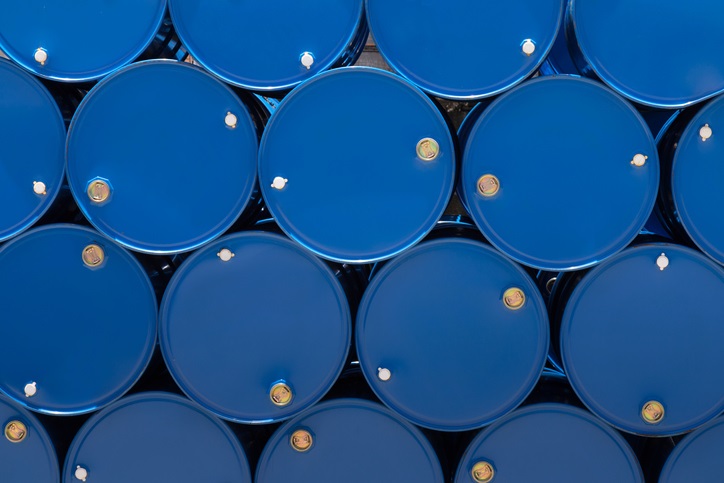ii view: how Harbour Energy could be debt free in 2023
17th March 2022 12:10
by Keith Bowman from interactive investor
Shares for the company formerly known as Premier Oil are bucking the trend year-to-date. We assess prospects.

Full-year results to 31 December 2021
- Revenue up 48% to $3.62 billion (£2.75 billion)
- Pre-tax profit of $315 million (£239 million), up from a 2020 loss of $978 million (£743 million)
- Year-end net debt of $2.3 billion (2020: $1.5 billion)
- Final dividend of 11 US cents per share
Chief executive Linda Z Cook said:
"2021 was a transformational year with completion of the Merger, our third significant transaction since 2017. As a result, we became a public company with a global footprint.
"With our scale, our commitment to producing safely and responsibly, our robust balance sheet and track record of successful M&A, I believe we are well placed to deliver value creation, growth and shareholder returns."
ii round-up:
Harbour Energy (LSE:HBR), formed by the merger of Premier Oil and Chrysaor, made a return to profit in its latest results for the year to December.
Pre-tax profit for the FTSE 250 oil and gas company came in at $315 million (£239 million) in 2021, up from a loss of $978 million in 2020. Revenue rose 48% to $3.62 billion (£2.75 billion), driven by a surge of almost 50% in the price of Brent crude oil as economies globally reopened following pandemic lockdowns.
Shares for Harbour Energy rose by more than 3% in UK trading, leaving them up by over 15% year-to-date. The oil price recently hit a 14-year high following the outbreak of war in Ukraine, although has subsequently fallen back below $100 per barrel as investors fretted over a return to pandemic lockdowns in parts of China.
Shares for energy giant Shell (LSE:SHEL) are also up by a similar amount to Harbour during 2022. Tullow Oil (LSE:TLW) and EnQuest (LSE:ENQ) have risen by around 2% and 32% respectively.
Harbour expects 2022 production to rise by 15% to between 195,000 and 210,000 barrels of oil equivalent per day (boe/d) compared to 2021.
At an average price of $100 per barrel for oil over 2022, Harbour expects to generate between $1.5 and $1.7 billion of free cash flow. That would give it the potential to be debt free come 2023. Group net debt as of 31 December 2021 stood at $2.3 billion.
Both the 2021 results and guidance for 2022 are in line with expectations, with the key positive being the potential 2023 debt free outcome.
Commissioning of its Tolmount North Sea platform is largely complete with the start-up of the field currently underway. Both its Talbot and Tuna platforms have been successfully appraised and are now being progressed towards a final investment decision.
A final dividend of 11 US cents per share was declared.
ii view:
In 2021, and via a reverse takeover, Chrysaor merged with Premier Oil plc to create Harbour Energy. The deal completed in March 2021, whereupon Premier changed its name from Premier Oil to Harbour Energy Plc. Harbour is today the largest UK listed independent oil and gas company. Employing around 1,500 people, it has operations in the UK, Norway, Indonesia, Vietnam, Brazil, Mexico and the Falkland Islands.
For investors, the highly volatile price of oil and gas, combined with the speculative nature of exploration, means shares in industry players such as Harbour are typically followed by investors with a medium to higher appetite for risk. Potential government windfall taxes on elevated oil related profits need to be remembered, as does the highly uncertain economic outlook and ongoing worries about pandemic lockdowns in China, the world’s second biggest economy .
On the upside, geopolitical tensions and a desire to boycott Russian oil and gas have elevated energy prices, raising expected free cashflow at Harbour and increasing the potential for debt reduction and associated financing costs. Production output is expected to rise over 2022, while a sustainability policy has been established which includes initiatives to explore the opportunity for CO2 capture and storage. In all, and given a return to profit, this oil and gas play looks likely to stay on the watch list of many energy industry investors.
Positives:
- 2022 production expected to increase
- Potential to be debt free by 2023
Negatives:
- Highly volatile oil and gas price
- Uncertain economic outlook
The average rating of stock market analysts:
Buy
These articles are provided for information purposes only. Occasionally, an opinion about whether to buy or sell a specific investment may be provided by third parties. The content is not intended to be a personal recommendation to buy or sell any financial instrument or product, or to adopt any investment strategy as it is not provided based on an assessment of your investing knowledge and experience, your financial situation or your investment objectives. The value of your investments, and the income derived from them, may go down as well as up. You may not get back all the money that you invest. The investments referred to in this article may not be suitable for all investors, and if in doubt, an investor should seek advice from a qualified investment adviser.
Full performance can be found on the company or index summary page on the interactive investor website. Simply click on the company's or index name highlighted in the article.